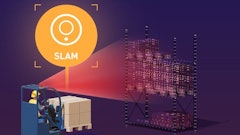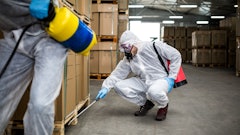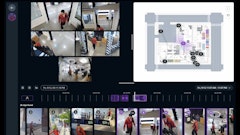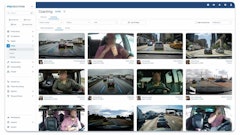
Despite rising efforts to combat distracted driving, it leads to thousands of vehicle crashes on a yearly basis. Laws help to a degree, but are often limited in scope, curbing a singular aspect in most instances, such as mobile phone usage. Meanwhile, additional behaviors like food consumption have less strict regulatory perimeters, meaning drivers could spill food or a drink and look down in a natural reaction and taking their eyes off the road can quickly result in a crash.
Distracted driving affects all drivers, commercial and consumer alike. Truck drivers are often most prone to the behavior, however, as they are expected to complete hauls of varying lengths in a timely manner, sometimes at odd hours of the day. As a commercial driver spends more time on the road, they can be lulled into a false sense of total security and control over their vehicle and fall into detrimental driving behavior as a result. The mistake can be fatal and is made all too often. In response, commercial truck fleets must join together to combat the distracted driving epidemic with a combination of tech solution investment, driver preparation, and continued education to fix dangerous driving habits. The problem is ongoing, but a more concerted effort to rid our roadways of distracted driving can make a significant impact on the safety of all that drive.
How distracted driving endangers all
The United States experienced 46,020 motor vehicle deaths in in 2021, according to the National Safety Council, a 9% increase in comparison to 2020 (42,339) and an 18% increase in comparison to 2019 (39,107). This trend is accentuated by data from Solera, in which drivers identified as “most distracted” were found to be 72% more likely to be involved in a near collision than all other drivers. Furthermore, the “most distracted” driver pool rolls through stop signs at a rate 2.7 times higher and drifts out of their given lane at a rate 2.3 times higher than drivers identified as “least distracted.” That type of behavior jeopardizes not only those drivers that exhibit it, but also all drivers around them, leading to the steady increase in motor-vehicle deaths we’re currently witnessing.
To date, cell phone use is the most popular form of distracted driving behavior. Research from Solera found that drivers described as “distracted heavily by mobile phones” are two times more likely to be involved in a vehicle collision and 3.2 times more likely to be involved in speeding incidents in which they’re going 10-plus mph over the speed limit, in comparison to drivers described as “least distracted.” Cell phone usage only continues to increase, as does the practice of checking for messages or notifications at a regular cadence, whether it be because a driver is expecting something or is simply bored. This certainly applies to commercial drivers in the midst of long hauls with nothing but the road ahead to occupy their attention. Nonetheless, just a momentary look down at one’s phone, even if only for a second or two, can draw a driver’s attention away for long enough to cause a fatal accident.
Outside of phone usage and eating, the term “distracted driving” includes a variety of behaviors while out on the roads, including dozing off or even talking to fellow vehicle passengers.
Cracking down on distracted driving
Curbing distracted driving behaviors is a crucial step in further ensuring driver safety; the process begins with driver preparation and accountability. Every time a commercial driver hits the road, driving needs to be the sole focus – without exception, no matter how familiar a driver is with their route and no matter how long the haul takes.
In the instance of long hauls, drivers must take stops as needed. It is at these points in which they can check their phones and engage in behaviors such as eating. Drivers may be enticed by the idea of finishing a haul as quickly as possible, and thus forgoing their breaks to simply get home efficiently; however, the breaks serve an important role in allowing drivers to take a mental break and engage in activities that would be considered distractive while driving. Even a hands-free mobile device can be distracting – if a driver wants to make a phone call, they should pull over or do so during one of their stops.
If drivers encounter drowsiness in the midst of a haul, even if towards the end of the drive, they should pull over immediately. Drowsiness can increase the risk of a car crash by almost four times; no matter how confident a driver is that they can push through, they’re doing so at less than 100% capacity. Drowsy driving statistically puts a driver, their truck, and the people in the vehicles nearby at risk. The danger is simply not worth it.
A helping hand from tech solutions
Accountability and preparation are key factors in avoiding distracted driving behaviors, but tech solutions add a helpful safety net to recognize and deter instances of distraction while on the road. No driver is perfect, and all are prone to the occasional distraction. Modern technology can hold drivers accountable, even when they are alone, to support their efforts to remain attentive. Modern car manufacturers have equipped their latest models with cameras and geospatial sensors, for example, to identify signs of distraction and prompt the driver to either pay attention or pull over.
Similarly, in-cab video-based safety programs provide a huge benefit for commercial fleets. Paired with safe driving coaches able to leverage insights from in-cab video to reinforce positive behavior (while deterring negative behavior), these programs can ensure that drivers are held accountable, even when they suffer from a lapse in attention. Through an in-cab video-based safety program, a driver’s risk can be measured and used as a foundation to prescribe necessary training. Attentive behavior is rewarded, while inattentive behavior is corrected.
When left unchecked, distracted driving worsens at a sharp pace. Commercial drivers spend a good portion of their days out on the roads; the more they text, call or eat while driving, the more they’ll continue to do so, until that behavior is checked – either by safe driving coaching, or by a dangerous collision. There is no single solution to combatting distracted driving, but through a combination of driver accountability, education, awareness and support from modern tech safety solutions, we can better work to get everyone to their intended destinations safely.



















